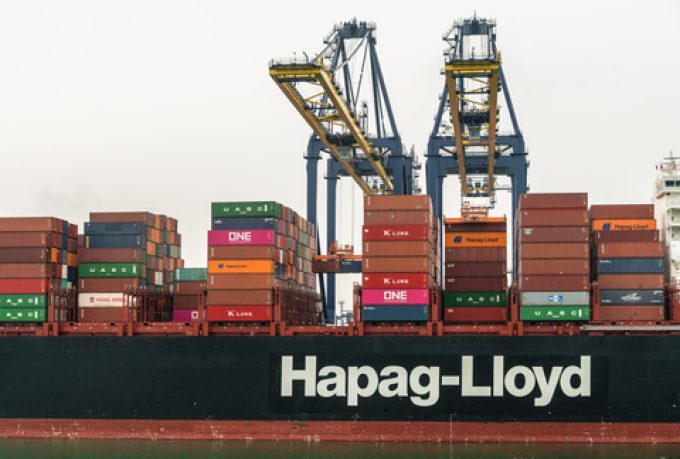Pricing deterrents have 'negligible impact' on shipping emissions, says study
Transport and Environment (T&E) has urged regulatory bodies to adopt “bespoke action” in reducing shipping ...
GXO: POLISH DEAL EXTENSIONDSV: TRIMMINGDSV: TRUMP TARIFFS IMPACTHLAG: GREEN PUSHDHL: ECOMM TIESKNIN: PARTNERSHIP EXTENSIONMAERSK: DECARB PUSHUPS: DIVIDEND RISKXOM: UPDATEVW: MILESTONE LINE: UNLIKEDXOM: DRILL BABY DRILLMAERSK: GREEN PUSHGM: BIG HIT
GXO: POLISH DEAL EXTENSIONDSV: TRIMMINGDSV: TRUMP TARIFFS IMPACTHLAG: GREEN PUSHDHL: ECOMM TIESKNIN: PARTNERSHIP EXTENSIONMAERSK: DECARB PUSHUPS: DIVIDEND RISKXOM: UPDATEVW: MILESTONE LINE: UNLIKEDXOM: DRILL BABY DRILLMAERSK: GREEN PUSHGM: BIG HIT

Hamburg’s Hapag-Lloyd has signed an agreement for China’s Goldwind to provide 250,000 tonnes of green methanol a year, adding half-again to the Maersk agreement made this time last year.
A spokesperson for Hapag-Lloyd told The Loadstar it had “agreed a more-than-10-year tenure”, expected to yield supplies of methanol from 2026.
Hapag-Lloyd recently announced plans to retrofit methanol dual-fuel capability to five of its vessels, which fleet manager Silke Lehmkoester said had been funded through green-insetting premiums paid by customers.
“As part of our Strategy 2030, we are fully committed to the 1.5-degree target of the Paris Agreement, and therefore also to sustainable investments,” said Hapag-Lloyd CEO Rolf Habben Jansen. “With the agreement, we are securing a significant proportion of our requirements for green fuels.”
The German carrier’s spokesperson told The Loadstar: “We decided on a blend, because it helps us to not only decarbonise in the most cost-effective way, but also to make us future-proof in case of any potential RFNBO [renewable fuels of non-biological origin in the EU] quota obligations introduced under FuelEU Maritime.”
The agreement represents a ‘doubling-down’ on green methanol by Hapag-Lloyd, despite LNG again clearly gaining ground among its top liner peers. The latest deal follows the Maersk agreement for 500,000 tonnes of green methanol made in November 2023.
At the time, Maersk’s strategy was centred around prefiguring the ‘chicken-and-egg’ debate over demand for future fuels by establishing a green methanol ecosystem from scratch, premised on funding methanol startups.
Maersk has backtracked significantly from this approach, but this may not have turned out to be as much of a ‘u-turn’ as initially thought. Research published recently by Alphaliner highlights that both Maersk and CMA CGM are pursuing a two-fuel strategy, with methanol and LNG. Hapag-Lloyd, meanwhile, was deemed to be committed to an LNG pathway, based on vessel deliveries this year and its orderbook.
However, this could be a sign of Hapag-Lloyd hedging its bets, as the prospect of retrofitting an LNG-fuelled vessel to methanol is likely to be more straightforward than retrofitting a conventionally-fuelled ship.
Bearing this out, the complex retrofit of Maersk Halifax to run on methanol, it emerged last week, incurred some eight months of vessel off-hire time and involved lengthening it by 15 metres – a modification more commonly associated with cruise ships.
With biogenic CO2 feedstocks abundant, though ultimately limited in availability, some experts have warned of a ceiling on the amount of green methanol that can be produced, in contrast to green ammonia.
As yet, however, the problem is sourcing enough start-up capital to tap even a small supply.
Meanwhile, Hapag-Lloyd’s five-vessel retrofit plan “will bring us an important step closer to our goal of achieving net-zero fleet operations by 2045”, Mr Habben Jansen added.
“It is and remains our ambition to play a leading role in the transformation of the liner shipping industry.”
Comment on this article